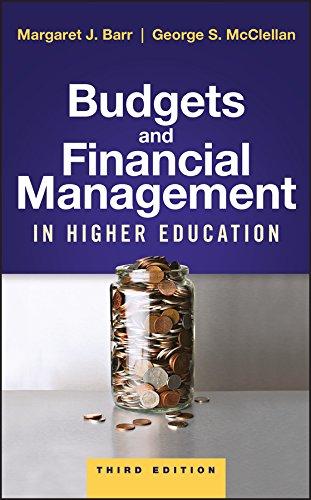Question
->Extra information to help solve the below exercises a. Find the FV of $1,000 invested to earn 12% after 4 years. Round your answer to
->Extra information to help solve the below exercises
a. Find the FV of $1,000 invested to earn 12% after 4 years. Round your answer to the nearest cent.
-> the answer is $1,573.52
c. Find the PV of $1,000 due in 4 years if the discount rate is 12%. Round your answer to the nearest cent.
-> the answer is $635.52
*Please help me with the calculation & excel calculations too for the below exercises:
h) What will the FV and the PV for parts a and c be if the interest rate is 12% with semiannual compounding rather than 12% with annual compounding? Round your answers to the nearest cent.
FV with semiannual compounding: $ PV with semiannual compounding: $
i. Find the annual payments for an ordinary annuity and an annuity due for 8 years with a PV of $1,000 and an interest rate of 11%. Round your answers to the nearest cent.
Annual payment for annuity due: $
j) Find the PV and the FV of an investment that makes the following end-of-year payments. The interest rate is 11%.
| Year | Payment |
| 1 | $200 |
| 2 | $300 |
| 3 | $400 |
Round your answers to the nearest cent.
PV of investment: $ FV of investment: $
k. Five banks offer nominal rates of 10% on deposits, but A pays interest annually, B pays semiannually, C pays quarterly, D pays monthly, and E pays daily. Assume 365 days in a year.
What effective annual rate does each bank pay? If you deposit $6,000 in each bank today, how much will you have in each bank at the end of 1 year? 2 years? Round your answers to two decimal places.
| A | B | C | D | E | ||||||
| EAR | % | % | % | % | % | |||||
| FV after 1 year | $ | $ | $ | $ | $ | |||||
| FV after 2 years | $ | $ | $ | $ | $ | |||||
If the TVM is the only consideration, what nominal rate will cause all of the banks to provide the same effective annual rate as Bank A? Round your answers to two decimal places.
| B | C | D | E | |||||
| Nominal rate | % | % | % | % | ||||
Suppose you don't have the $6,000 but need it at the end of 1 year. You plan to make a series of deposits annually for A, semiannually for B, quarterly for C, monthly for D, and daily for E with payments beginning today. How large must the payments be to each bank? Round your answers to the nearest cent.
| A | B | C | D | E | ||||||
| Payment | $ | $ | $ | $ | $ | |||||
Even if the five banks provided the same effective annual rate, would a rational investor be indifferent between the banks?
It is more likely that an investor would prefer the bank that compounded ________requently.(more/less)
Step by Step Solution
There are 3 Steps involved in it
Step: 1

Get Instant Access to Expert-Tailored Solutions
See step-by-step solutions with expert insights and AI powered tools for academic success
Step: 2

Step: 3

Ace Your Homework with AI
Get the answers you need in no time with our AI-driven, step-by-step assistance
Get Started


